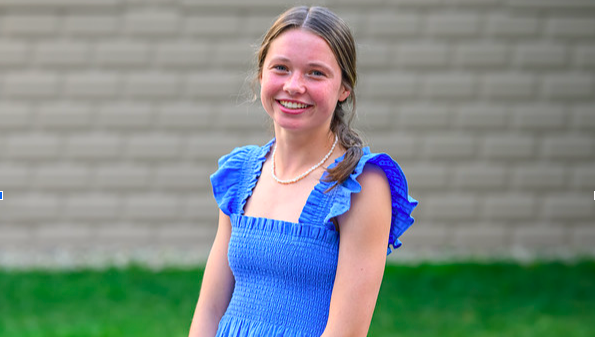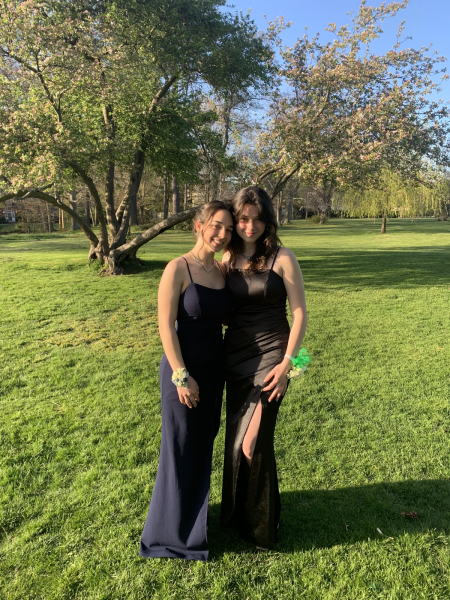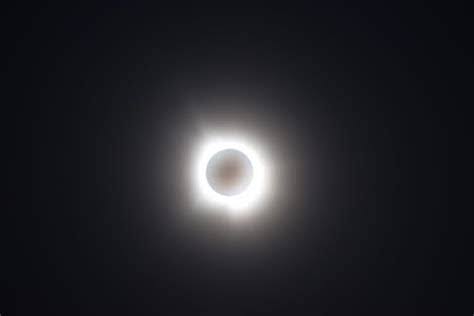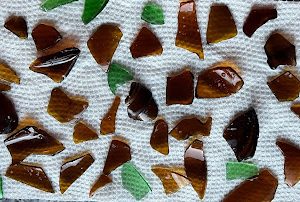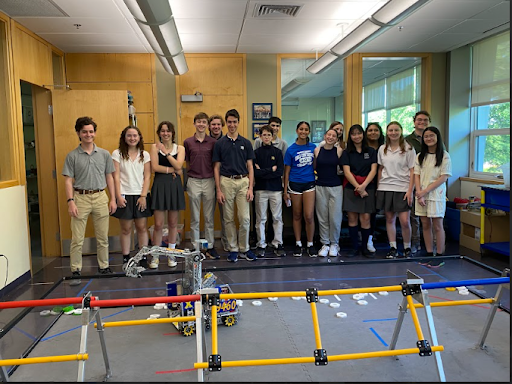How do Bluetooth headphones work?

I love my headphones. But how do they work?
I love my headphones. I can turn them on, connect them to my phone, and play whatever I want, even if I walk into another room. I know that this wireless connection works because of Bluetooth, but what is Bluetooth, anyway?
We know that digital data depends on 1s and 0s. But how do those numbers fly through the air and translate into my favorite albums? Think back to chemistry. Remember the unit on the electromagnetic spectrum? We learned that different wavelengths produce different colors. Bluetooth also uses wavelengths to transmit data.
But we can’t see colorful waves flying into our headphones because Bluetooth uses a different section of the spectrum. Bluetooth waves are from the microwave section of the spectrum, not the visible light section. Don’t worry; you’re not cooking your ears in your headphones. Though Bluetooth and microwaves both use the same section of the electromagnetic spectrum, microwaves use much more energy. If microwaves were like floodlights, Bluetooth waves would be like a candle. So, no need to ditch the headphones.
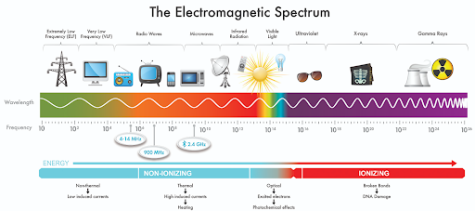
((a360-wp-uploads.s3.amazonaws.com))
Great, so data travels on wavelengths somehow. How do wavelengths convey strings of 1s and 0s? Different frequencies within the frequency band represent 1s and 0s. For example, a wave of 121mm could mean a 1, while a wave of 124mm could mean a 0. Your headphones receive those waves, and they recognize them as the 1s and 0s they represent. Basically, if your headphones detect a wave of a certain length, they can recognize it as representing a 1 or 0 in binary code, and they can then translate that string of numbers into the music you love.
The process also works in reverse; if you’re on a phone call, your headphones can send what you’re sending back to your phone through certain wavelengths.
But what if you and your friend are both listening to music? How do you make sure that your music doesn’t end up playing in their headphones? When your phone transmits the binary to your headphones, it starts with an access code. This code essentially acts as an address: “Bad Bunny for Hana Shinzawa’s headphones.” If my phone tried to send the data to my friend’s headphones, the access code wouldn’t match, and the rest of the data would not be sent.
If you’re really concerned about your music going to someone else, your phone also switches frequencies while it transmits data. Throughout the bandwidth for Bluetooth, there are 79 possible channels. So your phone essentially says: “Hey headphones! Heads up: I know that 1s have been 121mm and 0s have been 124mm, but now I’m going to use 122mm for 1s and 125mm for 0s.” This frequency hopping goes on throughout your listening session, so you can avoid noisy channels or channels that other people are using. It also helps ensure a more secure connection; if you have really bad music taste, no worries. We can’t listen in.
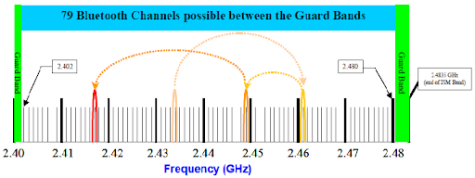
(Adaptative Frequency Hopping – Near Communications (google.com))
If you’re interested in learning more about Bluetooth, check out this video from Branch Education. It was so helpful for me in writing this article, and I highly suggest that you take a look.
By Hana Shinzawa ‘24, Co-Assistant Editor-in-Chief and Science Editor
24hshinzawa@montroseschool.org




